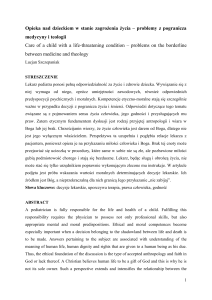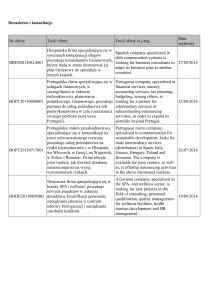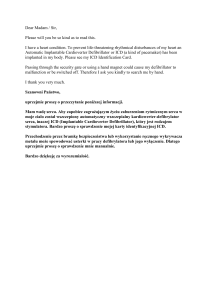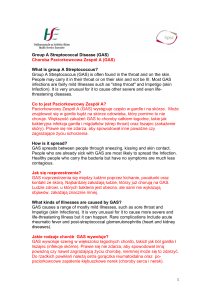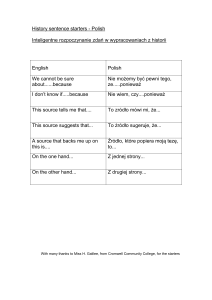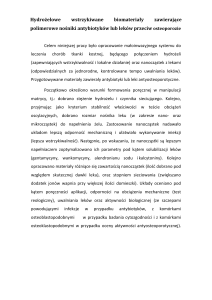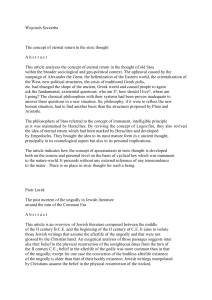Uploaded by
pacynkap
Legal Regulations on Police Use of Firearms Worldwide
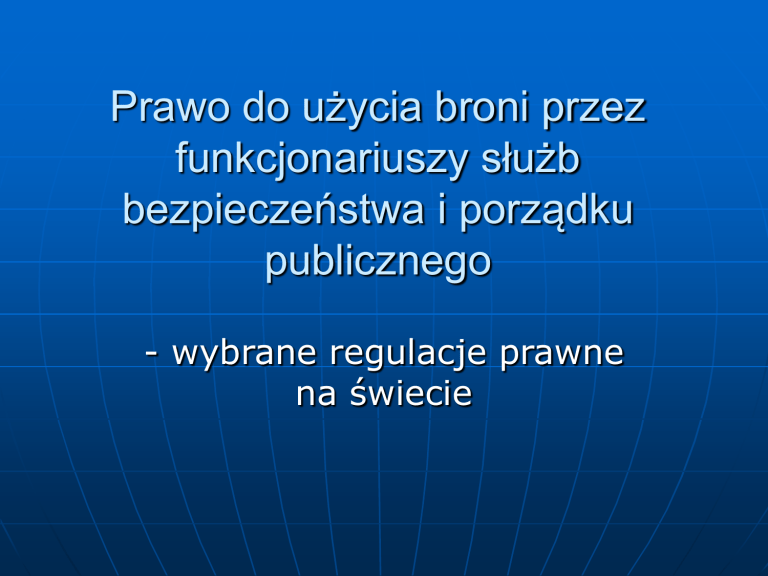
Prawo do użycia broni przez funkcjonariuszy służb bezpieczeństwa i porządku publicznego - wybrane regulacje prawne na świecie Regulacje ONZ Basic Principles on the Use of Force and Firearms by Law Enforcement Officials, 1990 Law enforcement officials shall not use firearms against persons except in self-defence or defence of others against the imminent threat of death or serious injury, to prevent the perpetration of a particularly serious crime involving grave threat to life, to arrest a person presenting such a danger and resisting their authority, or to prevent his or her escape, and only when less extreme means are insufficient to achieve these objectives. In any event, intentional lethal use of firearms may only be made when strictly unavoidable in order to protect life. Wielka Brytania Section 3 Criminal Law Act 1967 and Section 3 Criminal Law Act (Northern Ireland) 1967 ‘A person may use such force as is reasonable in the circumstances in the prevention of crime, or in the effecting or assisting in the lawful arrest of offenders or suspected offenders or of persons unlawfully at large’ „Manual of guidance on police use of firearms” Oficer upoważniony do noszenia broni może użyć broni tylko, jeśli wyczerpał inne środki lub jeśli te środki z natury swojej będą nieskuteczne. Oddawanie strzałów ostrzegawczych jest niebezpieczne – może spowodować, że przestępcy lub inni oficerowie uznają, że znaleźli się pod ostrzałem i będą reagować na takie okoliczności. Oficer upoważniony do noszenia broni musi się zidentyfikować i jasno ostrzec o intencji użycia broni z zachowanie odpowiedniego czasu na reakcję, chyba, że: • spowodowałby tym zagrożenie życia lub zdrowia innej osoby, • byłoby to jasno niewskazane lub bezcelowe w istniejącej sytuacji. Kanada Kodeks karny (Criminal Code), sekcja 25.3, 25.4 oraz 27 25(3) Subject to subsection (4), a person is not justified for he purposes of subsection (1) in using force that is intended or is likely to cause death or grievous bodily harm unless he believes on reasonable grounds that it is necessary for the purpose of preserving himself or any one under his protection from death or grievous bodily harm. 25(4) A peace officer who is proceeding lawfully to arrest, with or without warrant, any person for an offence for which that person may be arrested without warrant, and every one lawfully assisting the peace officer, is justified, if the person to be arrested takes flight to avoid arrest, in using as much force as is necessary to prevent the escape by flight, unless the escape can be prevented by reasonable means in a less violent manner. 27 Every one is justified in using as much force as is reasonably necessary • (a) to prevent the commission of an offence (i) for which, if it were committed, the person who committed it might be arrested without warrant, and (ii) that would be likely to cause immediate and serious injury to the person or property of any one; or • (b) to prevent anything being done that, on reasonable grounds, he believes would, if it were done, be an offence mentioned in paragraph (a). Nowa Zelandia Crimes Act, 1961 48 Self-defence and defence of another Every one is justified in using, in the defence of himself or another, such force as, in the circumstances as he believes them to be, it is reasonable to use. 39 Force used in executing process or in arrest Where any person is justified, or protected from criminal responsibility, in executing or assisting to execute any sentence, warrant, or process, or in making or assisting to make any arrest, that justification or protection shall extend and apply to the use by him of such force as may be necessary to overcome any force used in resisting such execution or arrest, unless the sentence, warrant, or process can be executed or the arrest made by reasonable means in a less violent manner: provided that, except in the case of a constable or a person called upon by a constable to assist him, this section shall not apply where the force used is intended or likely to cause death or grievous bodily harm. 40 Preventing escape or rescue „Manual of guidance on police use of firearms” W żadnym wypadku nie można postrzelić przestępcy dopóki nie został wezwany do poddania się, chyba że: (a) w istniejących okolicznościach byłoby to niepraktyczne lub niebezpieczne (impracticable and unsafe) I (b) jest oczywiste, że nie można go aresztować bez użycia broni palnej I (c) w istniejących okolicznościach odwlekanie aresztowania go byłoby niebezpieczne lub niepraktyczne (dangerous or impracticable) USA ZASADY DEPARTEMANTU SPRAWIEDLIWOŚCI USA DLA PROMOWANIA ETYCZNEGO POSTĘPOWANIA W POLICJI •2. Deadly Force Law enforcement officers are authorized to use deadly force only when it is reasonable and necessary to protect the officer or others from an imminent danger of death or serious physical injury to the officer or another person. If nondeadly force reasonably appears to be sufficient to accomplish an arrest or otherwise accomplish the law enforcement purpose, deadly force is not necessary. Agencies should develop use of force policies that address use of firearms and other weapons and particular use of force issues such as: firing at moving vehicles, verbal warnings, positional asphyxia, bar arm restraints, and the use of chemical agents.
